Related Research Articles
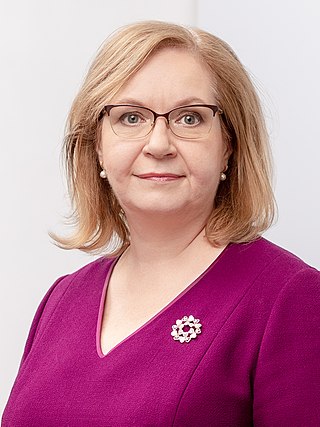
Maris Lauri is an Estonian politician, former Minister of Justice and a member of the Reform Party. She was the Minister of Finance in Taavi Rõivas's first cabinet from November 2014 to April 2015 and later as the Minister of Education and Research in 2016. Before her nomination, Lauri worked as the adviser for the Prime Minister. Previously she has worked as the head economist of Swedbank and for the Bank of Estonia.

Electoral district no. 1 is one of the 12 multi-member electoral districts of the Riigikogu, the national legislature of Estonia. The electoral district was established in 1995 following the re-organisation of the electoral districts in Tallinn. It is conterminous with the districts of Haabersti, Kristiine and Põhja-Tallinn in Tallinn. The district currently elects 10 of the 101 members of the Riigikogu using the open party-list proportional representation electoral system. At the 2019 parliamentary election it had 85,469 registered electors.
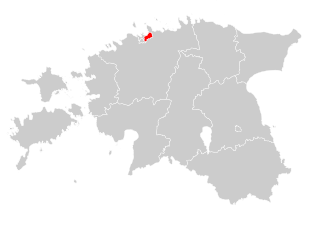
Electoral district no. 2 is one of the 12 multi-member electoral districts of the Riigikogu, the national legislature of Estonia. The electoral district was established in 1995 following the re-organisation of the electoral districts in Tallinn. It is conterminous with the districts of Kesklinn, Lasnamäe and Pirita in Tallinn. The district currently elects 13 of the 101 members of the Riigikogu using the open party-list proportional representation electoral system. At the 2019 parliamentary election it had 111,135 registered electors.
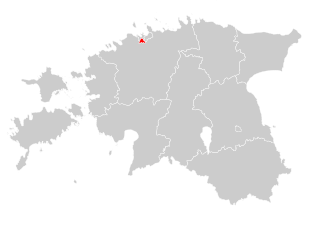
Electoral district no. 3 is one of the 12 multi-member electoral districts of the Riigikogu, the national legislature of Estonia. The electoral district was established in 1995 following the re-organisation of the electoral districts in Tallinn. It is conterminous with the districts of Mustamäe and Nõmme in Tallinn. The district currently elects eight of the 101 members of the Riigikogu using the open party-list proportional representation electoral system. At the 2019 parliamentary election it had 71,882 registered electors.

Electoral district no. 4 is one of the 12 multi-member electoral districts of the Riigikogu, the national legislature of Estonia. The district was established as electoral district no. 5 in 1992 when the Riigikogu was re-established following Estonia's independence from the Soviet Union. It was renamed electoral district no. 4 in 1995 following the re-organisation of electoral districts. It is conterminous with the counties of Harju and Rapla. The district currently elects 15 of the 101 members of the Riigikogu using the open party-list proportional representation electoral system. At the 2019 parliamentary election it had 133,437 registered electors.
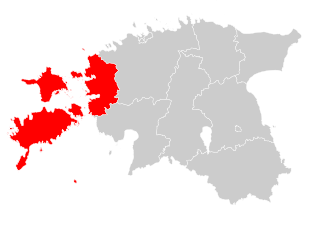
Electoral district no. 5 is one of the 12 multi-member electoral districts of the Riigikogu, the national legislature of Estonia. The district was established as electoral district no. 6 in 1992 when the Riigikogu was re-established following Estonia's independence from the Soviet Union. It was renamed electoral district no. 5 in 1995 following the re-organisation of electoral districts. It is conterminous with the counties of Hiiu, Lääne and Saare. The district currently elects six of the 101 members of the Riigikogu using the open party-list proportional representation electoral system. At the 2019 parliamentary election it had 51,093 registered electors.

Electoral district no. 6 is one of the 12 multi-member electoral districts of the Riigikogu, the national legislature of Estonia. The district was established in 2003 when the existing electoral district no. 6 was split into two. It is conterminous with the county of Lääne-Viru. The district currently elects five of the 101 members of the Riigikogu using the open party-list proportional representation electoral system. At the 2019 parliamentary election it had 44,583 registered electors.
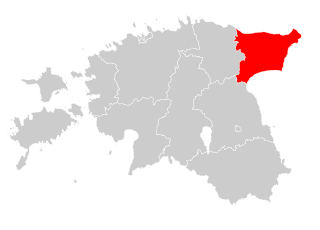
Electoral district no. 7 is one of the 12 multi-member electoral districts of the Riigikogu, the national legislature of Estonia. Established in 1992 when the Riigikogu was re-established following Estonia's independence from the Soviet Union, the district was abolished in 1995 following the re-organisation of electoral districts only to be re-established in 2003. It is conterminous with the county of Ida-Viru. The district currently elects seven of the 101 members of the Riigikogu using the open party-list proportional representation electoral system. At the 2019 parliamentary election it had 56,836 registered electors.
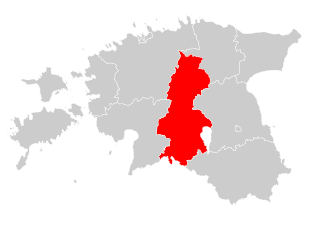
Electoral district no. 8 is one of the 12 multi-member electoral districts of the Riigikogu, the national legislature of Estonia. The district was established as electoral district no. 7 in 1995 following the re-organisation of electoral districts. It was renamed electoral district no. 8 in 2003 following another re-organisation of electoral districts. It is conterminous with the counties of Järva and Viljandi. The district currently elects seven of the 101 members of the Riigikogu using the open party-list proportional representation electoral system. At the 2019 parliamentary election it had 61,657 registered electors.

Electoral district no. 9 is one of the 12 multi-member electoral districts of the Riigikogu, the national legislature of Estonia. The district was established as electoral district no. 8 in 1995 following the re-organisation of electoral districts. It was renamed electoral district no. 9 in 2003 following another re-organisation of electoral districts. It is conterminous with the counties of Jõgeva and Tartu. The district currently elects seven of the 101 members of the Riigikogu using the open party-list proportional representation electoral system. At the 2019 parliamentary election it had 65,898 registered electors.
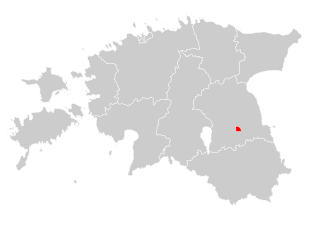
Electoral district no. 10 is one of the 12 multi-member electoral districts of the Riigikogu, the national legislature of Estonia. The district was established as electoral district no. 9 in 1995 following the re-organisation of electoral districts. It was renamed electoral district no. 10 in 2003 following another re-organisation of electoral districts. It is conterminous with the municipality of Tartu. The district currently elects eight of the 101 members of the Riigikogu using the open party-list proportional representation electoral system. At the 2019 parliamentary election it had 67,525 registered electors.

Electoral district no. 11 is one of the 12 multi-member electoral districts of the Riigikogu, the national legislature of Estonia. The district was established in 1992 when the Riigikogu was re-established following Estonia's independence from the Soviet Union. It was renamed electoral district no. 10 in 1995 following the re-organisation of electoral districts but reverted to electoral district no. 11 in 2003. It is conterminous with the counties of Põlva, Valga and Võru. The district currently elects eight of the 101 members of the Riigikogu using the open party-list proportional representation electoral system. At the 2019 parliamentary election it had 70,706 registered electors.

Electoral district no. 12 is one of the 12 multi-member electoral districts of the Riigikogu, the national legislature of Estonia. The district was established in 1992 when the Riigikogu was re-established following Estonia's independence from the Soviet Union. It was renamed electoral district no. 11 in 1995 following the re-organisation of electoral districts but reverted to electoral district no. 12 in 2003. It is conterminous with the county of Pärnu. The district currently elects seven of the 101 members of the Riigikogu using the open party-list proportional representation electoral system. At the 2019 parliamentary election it had 66,852 registered electors.
Electoral district no. 6 was one of the multi-member electoral districts of the Riigikogu, the national legislature of Estonia. The district was established in 1995 following the re-organisation of electoral districts. It was abolished in 2003. It was conterminous with the counties of Ida-Viru and Lääne-Viru.
Electoral district no. 1 was one of the multi-member electoral districts of the Riigikogu, the national legislature of Estonia. The district was established in 1992 when the Riigikogu was re-established following Estonia's independence from the Soviet Union. It was abolished in 1995. It covered south Tallinn.
Electoral district no. 2 was one of the multi-member electoral districts of the Riigikogu, the national legislature of Estonia. The district was established in 1992 when the Riigikogu was re-established following Estonia's independence from the Soviet Union. It was abolished in 1995. It covered north Tallinn.
Electoral district no. 4 was one of the multi-member electoral districts of the Riigikogu, the national legislature of Estonia. The district was established in 1992 when the Riigikogu was re-established following Estonia's independence from the Soviet Union. It was abolished in 1995. It covered east Tallinn.
Electoral district no. 8 was one of the multi-member electoral districts of the Riigikogu, the national legislature of Estonia. The district was established in 1992 when the Riigikogu was re-established following Estonia's independence from the Soviet Union. It was abolished in 1995. It was conterminous with the counties of Järva and Lääne-Viru.
Electoral district no. 9 was one of the multi-member electoral districts of the Riigikogu, the national legislature of Estonia. The district was established in 1992 when the Riigikogu was re-established following Estonia's independence from the Soviet Union. It was abolished in 1995. It was conterminous with the counties of Jõgeva and Viljandi.
Electoral district no. 10 was one of the multi-member electoral districts of the Riigikogu, the national legislature of Estonia. The district was established in 1992 when the Riigikogu was re-established following Estonia's independence from the Soviet Union. It was abolished in 1995. It was conterminous with the county of Tartu.
References
- ↑ "Riigikogu valimine 20 September 1992: Valimispäev - Tallinn 3" (in Estonian). Tallinn, Estonia: National Electoral Committee of Estonia. Retrieved 28 January 2021.
- ↑ "Riigikogu valimine 20 September 1992: Hääletamistulemus - Valimisringkond nr 3" (in Estonian). Tallinn, Estonia: National Electoral Committee of Estonia. Retrieved 28 January 2021.
- 1 2 "Riigikogu valimine 20 September 1992: Valimistulemus - Mandaatide omandamise viis" (in Estonian). Tallinn, Estonia: National Electoral Committee of Estonia. Retrieved 28 January 2021.